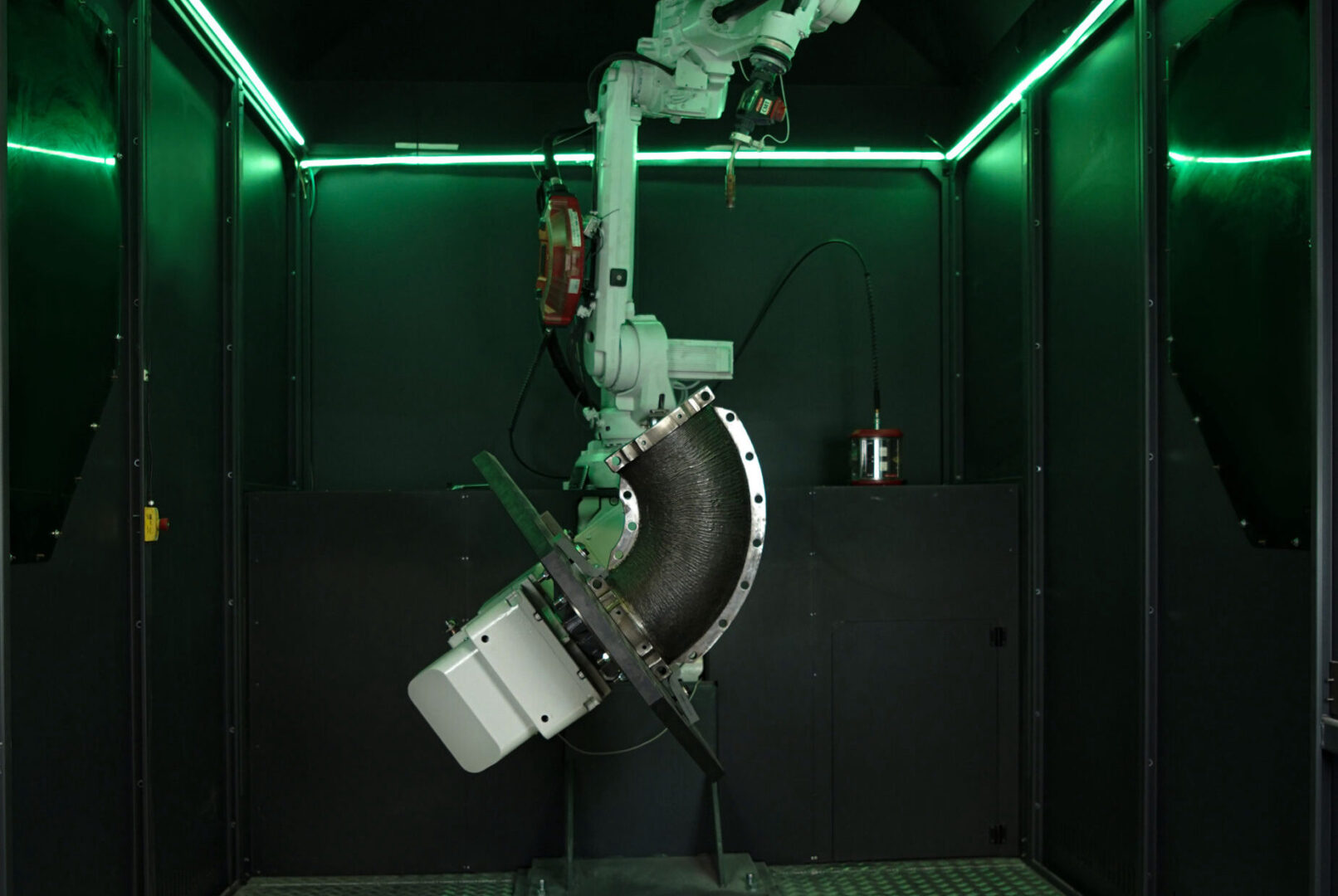
This 3D technology uses an arc welding process to produce metal parts additively which will reduce material waste and the production time for customised industrial pipeline clamps.
Robotic Wire Arc Additive Manufacturing (WAAM) is basically 3D printing (AM) where an industrial welding robot deposits metal layer-by-layer to build a workpiece. Hybrid WAAM is an advanced process where we incorporate pre-manufactured standard components into the robotic WAAM process. Hybrid Robotic WAAM has several advantages over conventional technologies such as forging, CNC-milling and manual welding (requiring speciality welders) for the oil and gas industry. Short lead times are key in the oil and gas industry, as both reducing production downtime and decreasing environmental, human and safety risks are critical. The current lead time of pipeline repair can be as long as 2 to 3 weeks with a potential lost value of several 100k to 1M EUR per day. Current repair processes by clamps typically rely on CNC milling, specialised manual labour, or a combination of both. Each of these processes have their downsides, as CNC milling has high material waste (on average >80% of the original material) and specialised labourers are becoming more scarce. The project showed that hybrid robotic 3D metal printing reduces material waste and production time of customised parts.
Challenge
Impact
Compared to forging, WAAM has a shorter fabrication lead time as it can produce local, on-demand and at remote locations. Compared to CNC-milling, WAAM has a much lower material waste due to using an additive manufacturing process instead of a subtractive process. Finally, compared to manual welding, the manufacturer is less dependent upon the availability of speciality welders, as robots can fabricate 24/7.
The destructive testing results following ASTM A370 proved that the printed material, even in its least favourable direction, has mechanical properties similar or better than the base material, hence fitting the ASME requirements.
FSTP Name:
WAAM CLAMP
Beneficiary Lead:
MX3D B.V.
mx3d.com/
Netherlands
Beneficiary 2:
Team Industrial Services Netherlands B.V.
www.teaminc.com/
Netherlands
Beneficiary 3:
TiaT Europe B.V.
https://tiat.nl/
Netherlands
Technology Area:
Additive Manufacturing
End User:
MX3D Manufacturing and several users (under NDA)
Start Date - End Date:
01/07/2020 - 30/09/2021
Duration:
15 months
FSTP Funding:
264 833,63 €
TRL Level at Start:
3
TRL Level at End:
7
Number of early adopters raised:
Confidential
SUBSCRIBE to newsletter
Please subscribe to our mailing list to be the first one informed about the new open calls, events and other hot news!
Your have successfully subscribed to Trinity newsletter.